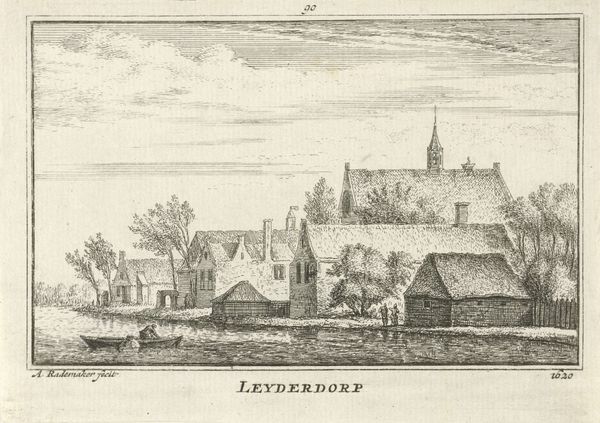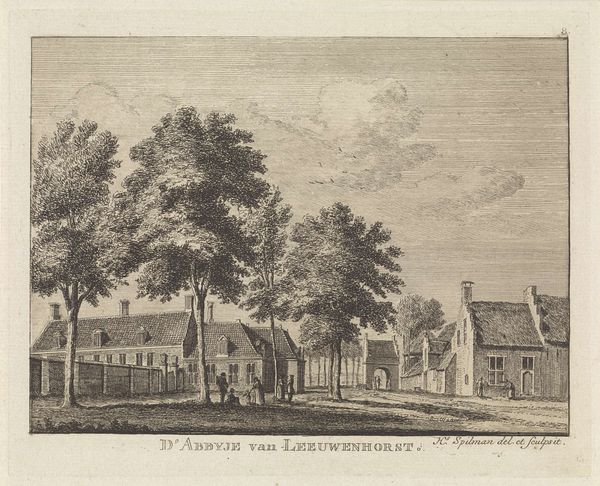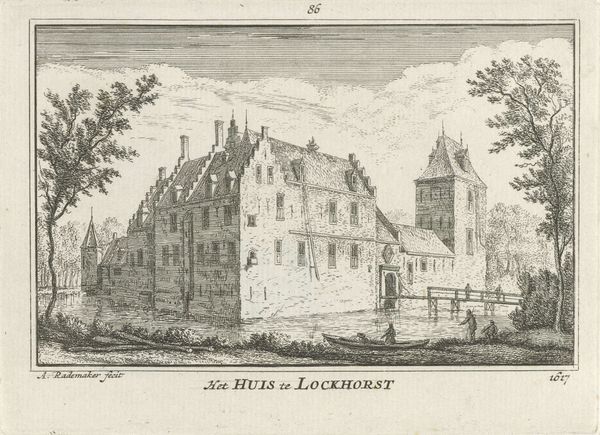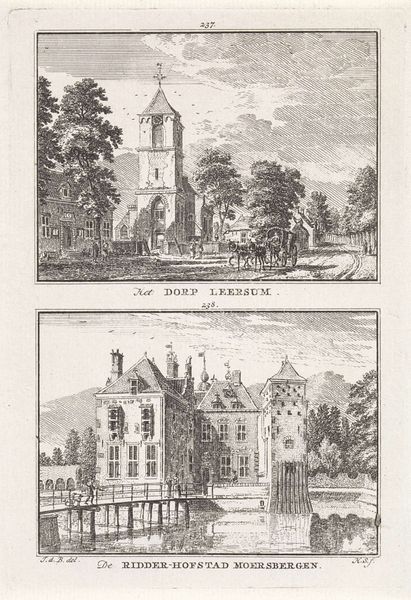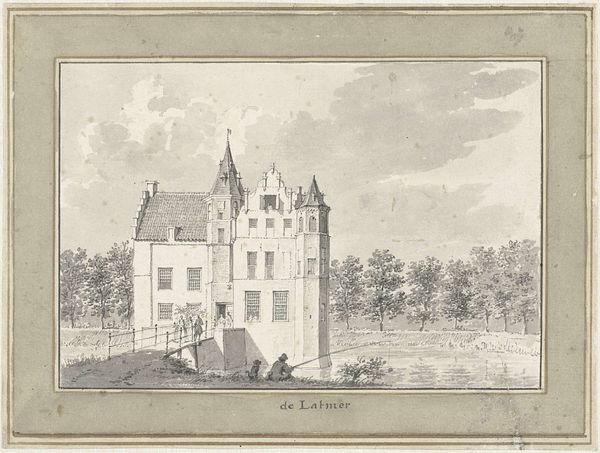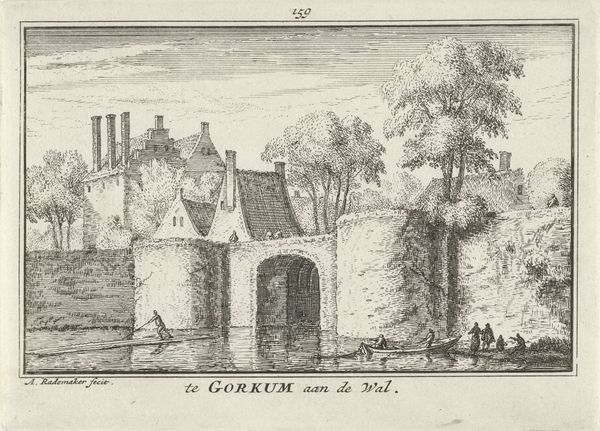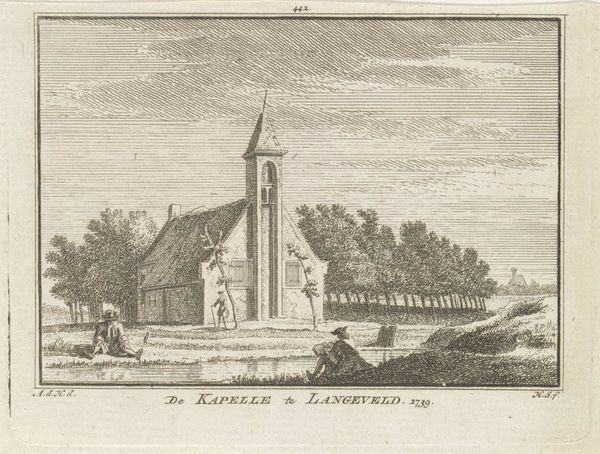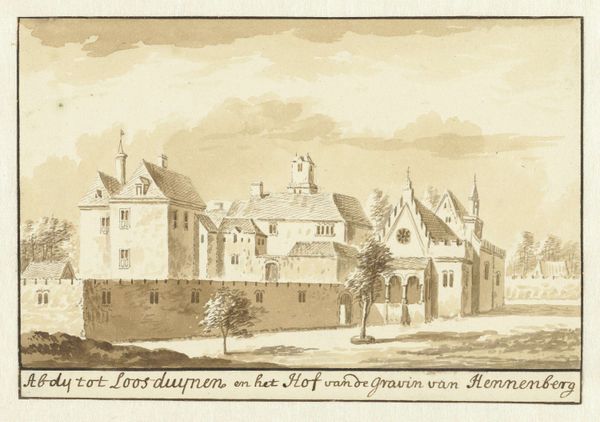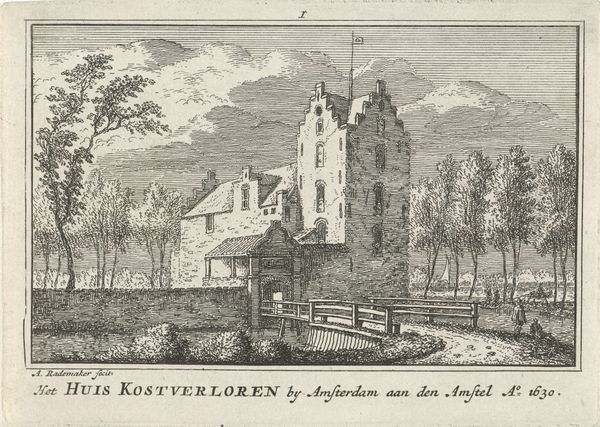
print, etching, engraving, architecture
#
baroque
#
dutch-golden-age
# print
#
etching
#
landscape
#
cityscape
#
engraving
#
architecture
#
realism
Dimensions: height 80 mm, width 115 mm
Copyright: Rijks Museum: Open Domain
Abraham Rademaker created this print of the Leprosen-Huis in Amsterdam around 1700, capturing a scene from nearly a century earlier. It’s an etching, meaning the artist would have used a sharp needle to draw into a wax-covered metal plate, which was then submerged in acid. The incised lines hold ink, which is transferred to paper under great pressure. Look closely, and you’ll see that the image is built from many fine, precise marks. This was a laborious process, demanding both skill and patience. Rademaker was part of a well-established printmaking industry in Amsterdam, catering to a market hungry for images of the city and its surroundings. This particular print invites us to consider the social context of 17th-century Amsterdam. The leprosarium, or leper house, was a place of confinement and care for those suffering from leprosy. The print thus serves as a stark reminder of the social inequalities and public health challenges of the time. It demonstrates how a ‘low’ medium like printmaking can nonetheless convey complex ideas about society.
Comments
No comments
Be the first to comment and join the conversation on the ultimate creative platform.

